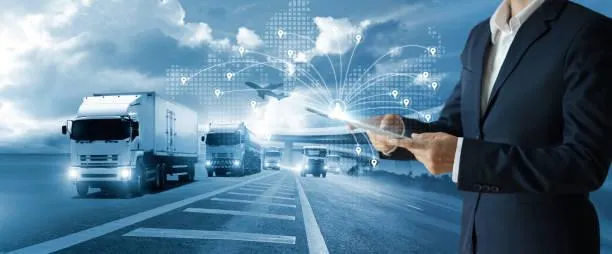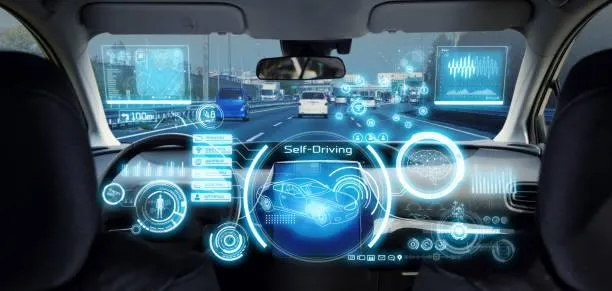6 Ways AI Is Changing the Shape of Transportation Industries
AI is shaping all industries, including transport and logistics, where it plays a significant role in helping these companies meet their roles.
The transport industry is diverse and covers passenger transport, cargo, shipping, train, trucking, and other logistical facilities. The transportation industry is growing fast hence the need for AI to meet goals such as increasing efficiency, reliability, and speedy delivery.

AI can help these companies to meet their needs in various ways. The technology is facilitating the introduction of autonomous, sustainable, driverless vehicles.
The benefits do not end there; they also boost safety, fleet management, and many more benefits.
Here are some ways in which Artificial intelligence (AI) is changing the industry.
1. Fleet Integration and Tracking
For companies operating a fleet of cars, tracking and managing all of them simultaneously can be challenging. The company must be vigilant in monitoring the position and activities of every car, its current route, and its activities.
This is significant to ensure the drivers are en route to the required destination, the cars are used for the right purposes, and the vans are not used for the wrong purposes.

With AI, the company can install a van tracking system to monitor the activities of all the vans to ensure they are only used for company needs.
The tracking systems are also critical for a large fleet of trucks and enable companies to monitor their logistical fleet instead of outsourcing. The tracking system also helps communicate with the drivers to boost logistical efficiency and reduce possible challenges.
AI flee tracking and management provides real-time and updated data about all the vehicles regardless of the time of the day. It is also critical for preventing issues such as theft.
The technologies are also essential for simplifying fleet data management hence improving future fleet management and logistical activities.
2. Automated Cars
The world is moving fast towards adopting smart and automated cars for different transportation needs. Today, smaller cars, majorly private cars, are leading the process to automate driving to reduce the burden on drivers or to improve safety records.
Most car manufacturers promise self-driving cars operation on major roads within the next ten years since it is the main selling point for future cars.

Major logics companies also focus on self-driving technologies for major trucks and logistical vehicles. The goal is to reduce the burden on drivers, especially those who transport cargo by truck for longer distances and to increase the benefits for major logistics and cargo companies.
These driverless trucks also promise increased safety standards since they promise exceptional safety technology to correct human mistakes such as overspeeding that lead to accidents such as jackknifing.
Today, driverless technologies are already deployed on minor scales in significant cargo hubs, such as ports where trucks transport containers from one point to another.
Due to road maintenance issues and limited support infrastructure, the technology is yet to be replicated on a large scale. Still, it’s only a matter before driverless trucks hit the roads.
Major truck manufacturers such as Volvo, tesla, and Mercedes are already testing these technologies on their trucks to revolutionize the future of transportation.
3. Traffic Management
One of the main challenges currently affecting logistics and transportation, especially in the shipping industry, is congestion.
This challenge began during the Covid-19 pandemic and continues due to a lack of efficient systems to manage the traffic systems to prevent unnecessary congestion.
AI can be used for traffic management in the shipping industry to prevent ships from waiting longer before they are offloaded. These delays further affect other transportation services, especially the last-mile transportation completed by trucks and railroads.
Traffic management technologies can also be essential for managing airport traffic to control the movement of planes.
The traffic management technologies can be suitable for large-scale shipping and logistical companies such as UPS, DHL, and others. The traffic management ensures faster turnaround and reduces lead time facilitating faster transportation services.
For road transportation needs, AI traffic management systems can determine the best route for truckers to follow to avoid traffic jams and provide faster delivery services.
4. Sustainable Transportation Services
The transportation sector is one of the leading contributors to global warming due to the number of fleets and the distance covered by vans and trucks. They contribute to a higher percentage of ozone gases, a significant contributor to global warming.
The technology aims to help reduce the global emission by these fleets. The technologies are also advocating for smart technologies such as sensors, smart highways, and other smart technologies to facilitate the use of smart cargo transportation systems.
For instance, technology is currently focusing on creating hybrid and electric vans, buses, and trucks that can transport cargo and people long distances.
The technology also facilitates the rise of energy-efficient trucks, hydrogen-powered vehicles, and other sustainable trucks and vans to make them sustainable. Currently, the technology focuses on boosting the distance covered by hydrogen and electric vehicles for transportation.
5. Route Optimization
One of how AI can revolutionize the transportation industry is route optimization. This refers to the maximization of specific routes to boost logistical services through time reduction and to increase the cargo to transport and the right time for transportation.
Using satellite traffic monitoring enables logistical companies to redirect moving trucks on highways and give them real-time traffic updates, avoiding various challenges.

These technologies are critical for avoiding bad weather, road traffic, and other route challenges affecting the ruck movement.
The information is directly communicated to the truck and van drivers through their smart monitors and systems. The driver can select the best routes through the systems to avoid any challenges.
Route optimization technologies are crucial for delivery services and vans that must deliver the goods on time. It also enables drivers to meet all delivery needs and surpass their daily targets.
6. Cargo and passenger vehicle safety
Transport vehicles are usually involved in many accidents, and sometimes, it is complicated to prevent these accidents due to the vehicle size, load capacity, and other challenges.
Bringing these vehicles to a stop, especially at total capacity, is a challenge, especially when the cars are at moderate to higher speeds.
AI system installed in these vehicles is critical to act as driver assistance technologies. The role is to ensure the drivers do not exceed certain limits and stop the cars at the right time to stop and prevent accidents. With AI, these vehicles are safer and have reduced accident records.
Conclusion
AI plays a significant role in shaping and changing the logistics and transport industry. Besides being one of the factors driving the industry’s growth, it has played an essential role in timely deliveries, increased safety, and making the industry sustainable.
It has also facilitated significant changes such as driverless vehicles, traffic management systems, and route optimization and selection.
Artificial intelligence (AI) is having a significant impact on the transportation industry, enabling more efficient and cost-effective operations, as well as improved safety and customer service.
Some examples of how AI is being used in transportation include:
Overall, AI has the potential to revolutionize the transportation industry by making it safer, more efficient, and more convenient for customers. However, there are also concerns about the impact of autonomous vehicles on employment and the need for regulations to ensure safety and privacy.
